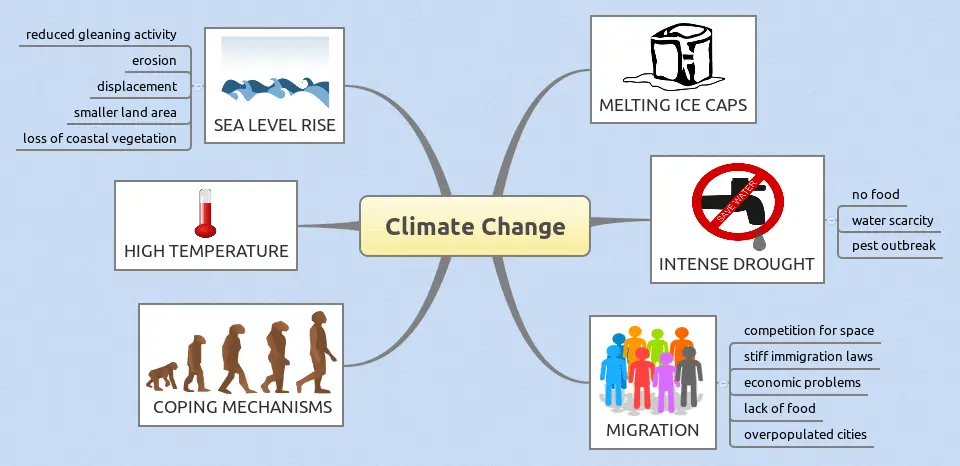Do you know that mind mapping is a useful research tool? Here are five tips on how to make a mind map in developing and enhancing your research topic. An example mind map on climate change is provided at the end of the article.
A mind map can portray relationships and interactions between the different variables or factors that arise from a given topic. For this reason, mind mapping can be effectively used in generating ideas to enrich and enhance your research topic. You can use your mind map in writing the introduction of your research paper or identify gaps in knowledge while preparing your review of literature.
Five Tips on How to Make a Mind Map for Research Purposes
How do you keep the ideas flowing and enrich your mind map to show everything that comes to mind? The following are five tips on how to make a mind map for research purposes.
1. Don’t evaluate too much.
As you prepare the mind map, you will have the tendency to stop and evaluate if you did connect the right factors or variables that come to mind.
Why is this so?
This is because you are still unconsciously bound by rules or standards set to conform with the norm. You want to conform with what you have learned or what other people have set before you.
You need not be concerned about these rules or standards but allow your mind to flow smoothly or wander. Just let it go where it can comfortably go.
Starting with the central idea, connect any subtopic that comes to mind. Don’t ask yourself whether that subtopic or idea is appropriate to connect with the central idea or not. Just quickly write it and connect with the central idea.
2. Give a time limit for each subtopic listed down in your mind map.
Allow only a few seconds to ponder on a specific subtopic you have written. Don’t let a minute pass on a single topic so you can populate your mind map with more ideas.
3. Be creative.
Preparing a mind map is an opportunity to be creative. You need not only words to express what comes to your mind.
If you want to draw a symbol, scribble a note, place a quotation or anything that reminds you of a particular topic, do it. Graphical entries make your mind map more interesting.
4. Avoid analysis paralysis.
Oftentimes, we have the tendency to overanalyze things or plan too much. This is referred to as analysis paralysis. It’s a hindrance to a productive endeavor.
Don’t be a perfectionist in making your mind map. Briefly analyze how the variables or factors relate with each other and then go ahead with the other components as swiftly as you can. Through constant practice, this will help you process information quickly.
5. Read a lot. Your mind map is only as good as your exposure on a given topic. Therefore, it pays to educate yourself on the specific topic you want to write about or do research on.
Example Mind Map on Climate Change
Applying these tips, I prepared a mind map on climate change as the main theme. Earlier, I wrote a paper based on a study on climate change in a previous post titled Household Adaptation to Climate Change in the Philippines. The factors drawn and included in the mind map are based on a WorldFish study conducted in 2013 titled Economic analysis of climate change adaptation strategies in selected coastal areas in Indonesia, Philippines and Vietnam. I added more factors based on my recall of studies read on factors affecting climate change. Many other variables come into play and get incorporated in the mind map as I let my mind wander. I tried to be sensitive on what subtopics my mind suggests to incorporate.
Using the tips above, here’s an example of a mind map that I have produced in a matter of 30 minutes using a free version of XMind, a mind-mapping software.

Try these tips and enhance your creativity in preparing mind maps.
© 2014 May 14 P. A. Regoniel


